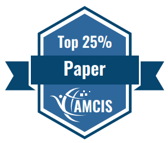Social Inclusion and Social-Technical Issues (SIG SI)
Loading...
Paper Type
Complete
Paper Number
1526
Description
The use of machine learning found its way into the field of educational research and address the necessity of data-driven student advisory. Notwithstanding the plethora of current research that predicts and quantifies aspects of students' academic success in various situations during a student's course of study, most studies focus on the technical aspects and overlook potential of direct discrimination. In addressing this gap, this study systematically reviews and identifies scholarly papers that use sensitive attributes to predict students' academic success, which are not allowed to be considered in the decision-making process due to legal restrictions. The review shows that in 95 studies, over 52 percent use at least one discriminating attribute defined by the International Covenant on Civil and Political Rights. This sheer volume highlights the need for practitioners and scholars to explore causal mechanisms to prevent potential discrimination or seek alternative solutions without using protected individual characteristics.
Recommended Citation
Schoemer, Daniel; Laumer, Sven; Wilbers, Karl; Wolbring, Tobias; Weigert, Jonas; and Treischl, Edgar, "Data-driven Student Advisory and Potential Direct Discrimination: A Literature Review on Machine Learning for Predicting Students' Academic Success" (2021). AMCIS 2021 Proceedings. 10.
https://aisel.aisnet.org/amcis2021/social_inclusion/social_inclusion/10
Data-driven Student Advisory and Potential Direct Discrimination: A Literature Review on Machine Learning for Predicting Students' Academic Success
The use of machine learning found its way into the field of educational research and address the necessity of data-driven student advisory. Notwithstanding the plethora of current research that predicts and quantifies aspects of students' academic success in various situations during a student's course of study, most studies focus on the technical aspects and overlook potential of direct discrimination. In addressing this gap, this study systematically reviews and identifies scholarly papers that use sensitive attributes to predict students' academic success, which are not allowed to be considered in the decision-making process due to legal restrictions. The review shows that in 95 studies, over 52 percent use at least one discriminating attribute defined by the International Covenant on Civil and Political Rights. This sheer volume highlights the need for practitioners and scholars to explore causal mechanisms to prevent potential discrimination or seek alternative solutions without using protected individual characteristics.
When commenting on articles, please be friendly, welcoming, respectful and abide by the AIS eLibrary Discussion Thread Code of Conduct posted here.



